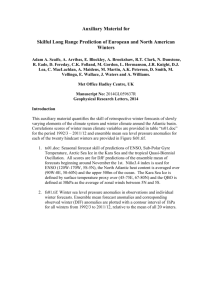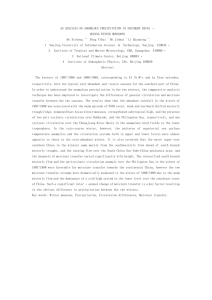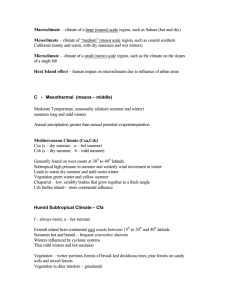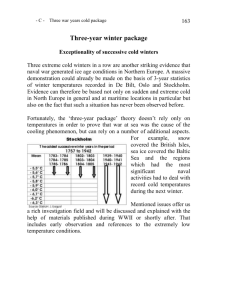Winter makes a comeback - Rosliston Weather, South Derbyshire
advertisement
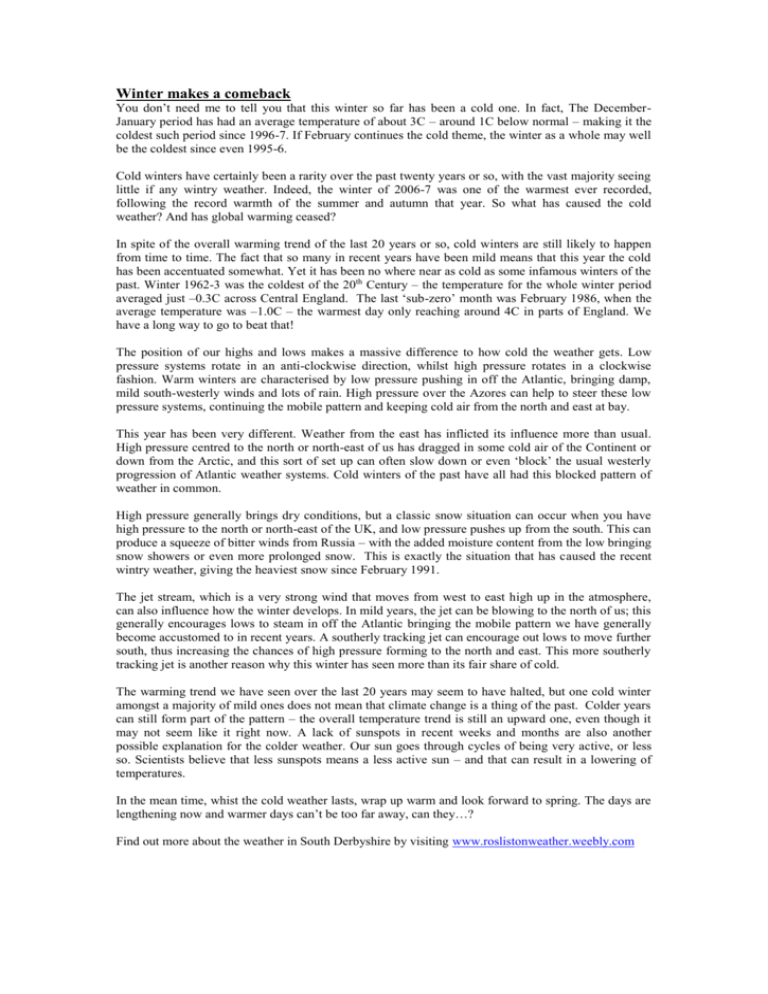
Winter makes a comeback You don’t need me to tell you that this winter so far has been a cold one. In fact, The DecemberJanuary period has had an average temperature of about 3C – around 1C below normal – making it the coldest such period since 1996-7. If February continues the cold theme, the winter as a whole may well be the coldest since even 1995-6. Cold winters have certainly been a rarity over the past twenty years or so, with the vast majority seeing little if any wintry weather. Indeed, the winter of 2006-7 was one of the warmest ever recorded, following the record warmth of the summer and autumn that year. So what has caused the cold weather? And has global warming ceased? In spite of the overall warming trend of the last 20 years or so, cold winters are still likely to happen from time to time. The fact that so many in recent years have been mild means that this year the cold has been accentuated somewhat. Yet it has been no where near as cold as some infamous winters of the past. Winter 1962-3 was the coldest of the 20th Century – the temperature for the whole winter period averaged just –0.3C across Central England. The last ‘sub-zero’ month was February 1986, when the average temperature was –1.0C – the warmest day only reaching around 4C in parts of England. We have a long way to go to beat that! The position of our highs and lows makes a massive difference to how cold the weather gets. Low pressure systems rotate in an anti-clockwise direction, whilst high pressure rotates in a clockwise fashion. Warm winters are characterised by low pressure pushing in off the Atlantic, bringing damp, mild south-westerly winds and lots of rain. High pressure over the Azores can help to steer these low pressure systems, continuing the mobile pattern and keeping cold air from the north and east at bay. This year has been very different. Weather from the east has inflicted its influence more than usual. High pressure centred to the north or north-east of us has dragged in some cold air of the Continent or down from the Arctic, and this sort of set up can often slow down or even ‘block’ the usual westerly progression of Atlantic weather systems. Cold winters of the past have all had this blocked pattern of weather in common. High pressure generally brings dry conditions, but a classic snow situation can occur when you have high pressure to the north or north-east of the UK, and low pressure pushes up from the south. This can produce a squeeze of bitter winds from Russia – with the added moisture content from the low bringing snow showers or even more prolonged snow. This is exactly the situation that has caused the recent wintry weather, giving the heaviest snow since February 1991. The jet stream, which is a very strong wind that moves from west to east high up in the atmosphere, can also influence how the winter develops. In mild years, the jet can be blowing to the north of us; this generally encourages lows to steam in off the Atlantic bringing the mobile pattern we have generally become accustomed to in recent years. A southerly tracking jet can encourage out lows to move further south, thus increasing the chances of high pressure forming to the north and east. This more southerly tracking jet is another reason why this winter has seen more than its fair share of cold. The warming trend we have seen over the last 20 years may seem to have halted, but one cold winter amongst a majority of mild ones does not mean that climate change is a thing of the past. Colder years can still form part of the pattern – the overall temperature trend is still an upward one, even though it may not seem like it right now. A lack of sunspots in recent weeks and months are also another possible explanation for the colder weather. Our sun goes through cycles of being very active, or less so. Scientists believe that less sunspots means a less active sun – and that can result in a lowering of temperatures. In the mean time, whist the cold weather lasts, wrap up warm and look forward to spring. The days are lengthening now and warmer days can’t be too far away, can they…? Find out more about the weather in South Derbyshire by visiting www.roslistonweather.weebly.com




